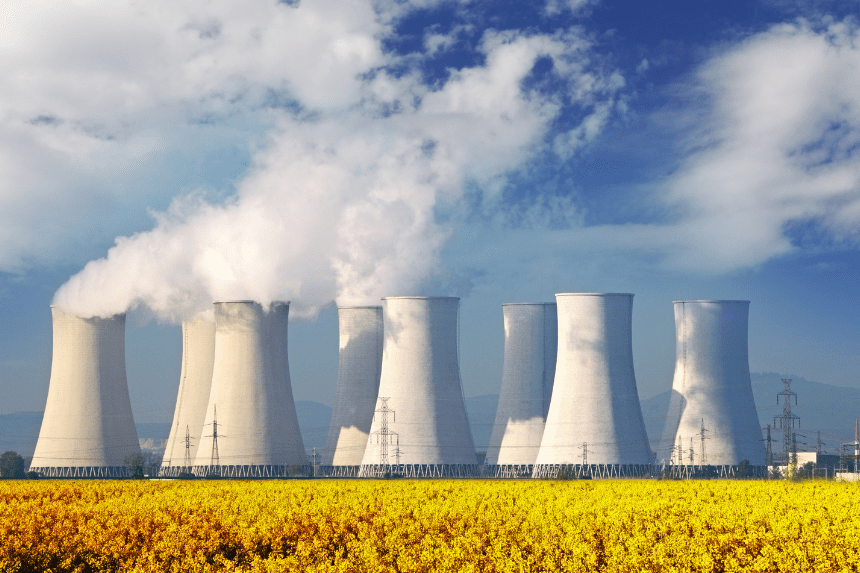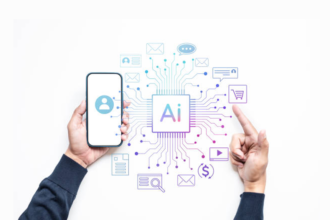The upward push of artificial intelligence is transforming industries throughout the globe. From healthcare diagnostics and logistics to finance and digital trade, AI is now a crucial part of contemporary commercial enterprise operations. But powering these structures doesn’t show up magically—it calls for great amounts of energy. At the heart of AI innovation lie fact centres, significant centers housing excessive-overall performance computing infrastructure. With their energy demands developing exponentially, nuclear power for statistics centres is rising as a reliable, smooth, and scalable solution to meet destiny energy needs.
As AI becomes greater embedded in our everyday lives, the physical infrastructure needed to help it grow. Data centres—as soon as particularly difficult to understand—have now taken centre stage in conversations approximately electricity coverage, sustainability, and economic development. In the UK, on my own, there are over 500 operational records centres, and they currently consume around 25% % of the country’s power. By 2030, that parent ought to reach as high as 6%. Ireland gives an excellent stark example, with records centres projected to account for 30% of the United States of America’s total power usage within the same period. These developments are not merely regional anomalies—they are early signs of an international shift.
Why Is Nuclear Energy a Strategic Fit for AI Infrastructure?
As virtual services become bigger and more corporations adopt AI, the need for solid and continuous power becomes urgent. Traditional fossil fuels, while still part of the mixture, are being phased out because of environmental worries. Renewable sources like wind and sun are expanding rapidly and play an essential role in decarbonisation. However, they have obstacles. Solar and wind are variable by using nature; they depend on weather and daytime conditions, which makes them less regular. For industries that require constantly-on, round-the-clock computing energy, this variability can pose massive risks.
This is where nuclear electricity for information centres becomes a particularly attractive alternative. Nuclear power provides a strong, 0-carbon strength source which can perform independently of weather and time of day. It offers constant output, ensuring that AI servers run easily without interruption. As AI programs—from predictive analytics to generative fashions—call for greater real-time processing and higher data loads, the significance of dependable energy can’t be overstated.
Nuclear also aligns with sustainability dreams. Unlike fossil fuels, it produces no greenhouse gas emissions throughout operation. For groups that have pledged to lessen their carbon footprints or attain net-zero emissions, integrating nuclear electricity into their strategies may be a substantial step forward. That’s why AWS, the world’s largest cloud services provider, is already exploring nuclear partnerships. The business enterprise’s CEO, Matt Garman, has publicly stated that nuclear isn’t always the handiest or a feasible alternative, but a vital one within the decade ahead. Read another article on Australia’s Energy Transition
Can Small Modular Reactors Accelerate the Transition?
The nuclear enterprise is likewise innovating to satisfy modern-day demands. Historically, one of the fundamental criticisms of nuclear electricity has been the time and price associated with constructing large-scale facilities. Facilities like Hinkley Point C and Sizewell inside the UK are huge tasks that take years to finish and billions of pounds in funding. While they offer high output and long-term balance, their improvement timelines no longer align nicely with the urgent pace of AI and digital infrastructure growth.
This is where Small Modular Reactors, or SMRs, come into the picture. SMRs are a brand new era of nuclear power designed to be greater bendy, affordable, and faster to install than traditional nuclear power plants. Typically, the scale of a football stadium, SMRs may be synthetic in factories and transported to their vacation spot for installation. This reduces costs and construction times appreciably. Their modular nature also allows for incremental scaling—operators can set up larger devices as demand grows.
In the USA, Amazon is already running with SMR developers in Washington and Virginia. The UK, too, is investing in SMR research and improvement, with engineering corporations like Rolls-Royce main the price. With appropriate regulatory guidance and infrastructure making place, the UK should see SMRs complementing present nuclear power sources to supply the developing digital financial system. The idea of co-locating SMRs with statistics centres is likewise gaining traction, developing a localised electricity environment that minimises transmission losses and maximises reliability. It’s some other purpose why momentum is building around nuclear strength for information centres as an ahead-of-the-game solution.
What Are the Challenges and Risks of This Strategy?
Of course, the direction ahead isn’t without barriers. While SMRs promise quicker deployment, they’re nevertheless largely in the development and testing phases. Very few have been built and brought online globally. Regulatory approvals, public belief, and economic backing are all critical variables that might slow development. Additionally, grid infrastructure remains a bottleneck. Even if an electricity supply is ready, connecting it to the national grid—or directly to a facts centre—can take years because of logistical and bureaucratic delays.
Jess Ralston of the Energy and Climate Intelligence Unit points out that delays in grid connections can appreciably preserve returned innovation and funding. She cautions that even as nuclear energy for records centres gives capacity, traditional nuclear stays steeply-priced and slow, and SMRs haven’t begun to show themselves at scale. These worries are valid and underscore the want for coordinated planning throughout authorities, enterprise, and software vendors.
Despite the challenges, there’s a growing consensus that nuclear will play an essential role in future power techniques. Governments are beginning to adjust policies to streamline approval techniques and decrease planning delays. The Department for Energy Security and Net Zero within the UK has already proposed modifications to boost nuclear production timelines, especially for SMRs. These movements sign a clear dedication to aligning national energy planning with the needs of the AI-powered financial system.
How Should Businesses Prepare for the Future of AI and Energy?
For groups reliant on AI, making ready for this energy evolution isn’t non-obligatory—it’s a business vital. Energy costs and reliability can without delay effect operations, consumer revel in, and long-term growth. This makes it essential for technology leaders, information centre operators, and company choice-makers to actively follow traits in nuclear power for facts centres and integrate them into strategic making plans.
The coming years will probably deliver important advancements in SMR technology, regulatory reform, and strong partnerships. Forward-looking corporations are already exploring different strength procurement techniques that blend renewables with nuclear. Some are also advocating for quicker infrastructure deployment through public-private partnerships. The intention is obvious: to ensure the electricity that powers the following day’s AI is clean, dependable, and ample.
Conclusion: Is Nuclear the Missing Link in AI’s Energy Future?
Artificial intelligence is simplest as effective because the infrastructure that supports it. Data centres are at the heart of this environment, and their electricity desires are growing dramatically. While renewables remain essential, they may not be sufficient on their own. The consistent, zero-carbon electricity presented by using nuclear strength for records centres makes it a important a part of the equation.
As SMRs mature and regulatory pathways become clearer, nuclear has the capacity to provide the reliable basis needed for the following technology of AI-driven innovation. Planning these days way being equipped tomorrow. Those who act early could be best positioned to steer in a virtual financial system where strength resilience and sustainability cross hand in hand.








